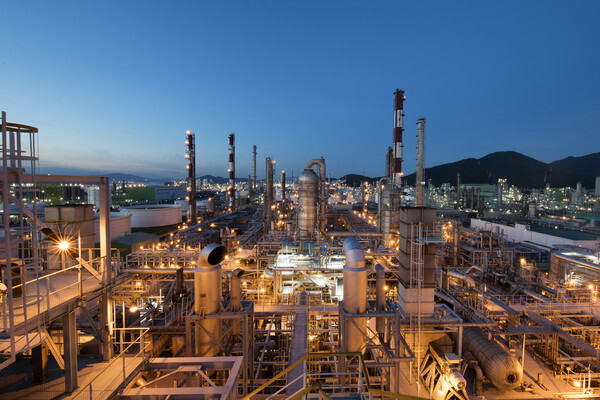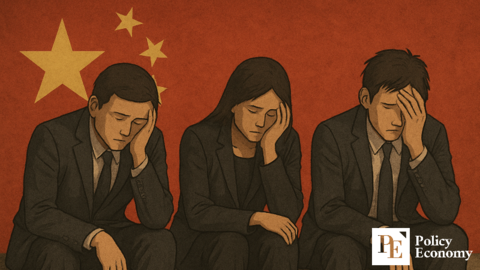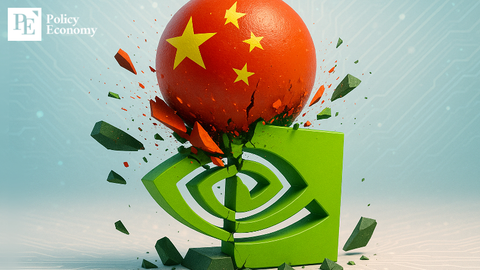Petrochemical Restructuring in Dire Straits, Credit Rating on the Line Within the Year
Input
Modified
Profitability of domestic petrochemical firms on steep decline Efficiency of individual NCC facilities and self-help measures critical Credit rating adjustment possible in the second half

The petrochemical industry, mired in prolonged downturn, is facing the risk of credit rating shocks across the sector, contingent on the course of restructuring. With oversupply from China and the Middle East weighing heavily, the restructuring plans aligned with the government’s mandated reduction in naphtha cracking center (NCC) capacity could trigger rating adjustments as early as the latter half of the year.
NICE Ratings to Reflect Restructuring Outcomes
According to the petrochemical industry on the 18th, NICE Investors Service announced at the “NICE Credit Seminar 2025” in Seoul that rating changes may occur depending on the timing and content of restructuring. Ji Hyung-sam, head researcher at NICE’s corporate evaluation division, stated, “If earnings deterioration persists during restructuring, weakening debt repayment capacity, there is a possibility of credit rating adjustments in the second half.” He added, “Whether business structures improve, facilities become more efficient, or core assets are divested will all be reflected in credit ratings.”
Profitability of Korean petrochemical firms has been on a continuous decline. According to NICE, the combined operating margin of LG Chem, Lotte Chemical, SK Geocentric, and Hanwha TotalEnergies fell to -0.3% last year. As recently as 2023, Korea’s margin stood at 2.5%, surpassing that of eight Japanese peers including Eneos and Mitsubishi Chemical (1.8%), but circumstances have since deteriorated sharply.
Concerns over the credit standing of petrochemical firms, weighed down by cumulative losses, have already translated into downgrades. In the first half alone, seven companies saw their long-term ratings or outlooks lowered by NICE. Hyosung Chemical and Lotte Chemical were downgraded for the second consecutive year. In June, NICE cut Lotte Chemical’s long-term rating from “AA” to “AA-” while shifting its outlook from “Negative” to “Stable,” citing the persistence of industry downturn, constrained profitability, and weakened operating cash flow generation that would require time to restore debt repayment ability.

Korea Cutting Output, Middle East in Expansion Drive
Backed into a corner, major Korean petrochemical companies signed restructuring agreements last month, committing to present concrete plans by year-end to meet the government’s mandated reduction of up to 3.7 million tons of NCC capacity—equivalent to shutting down two to three facilities. Discussions in the industrial hubs of Yeosu, Daesan, and Ulsan now center on vertical integration with refiners and horizontal consolidation among neighboring NCCs. LG Chem has proposed an integrated NCC operation with GS Caltex, while Lotte Chemical is in talks with HD Hyundai Oilbank. A merger of SK Geocentric’s and Korea Petrochemical’s NCCs is also under review.
Yet skepticism abounds over whether such measures will yield tangible reductions, given the aggressive expansion by Middle Eastern producers leveraging cost advantages and advanced technologies. According to the Gulf Petrochemicals and Chemicals Association (GPCA), the petrochemical capacity of Gulf Cooperation Council (GCC) nations such as Saudi Arabia and the UAE grew at an average annual rate of 4.7% between 2012 and 2023, reaching 156.2 million tons in 2023 despite slower growth post-2021.
Saudi Aramco, for instance, is building the “Amiral Project” with France’s TotalEnergies in its eastern industrial zone, a mega-complex spanning 2 million pyeong with over $4.4 billion in investment. Upon completion, it will produce 1.65 million tons of ethylene annually. Aramco is also expanding capacity through its Yasref joint venture with Sinopec, while extending global reach with 10% stakes in Chinese private players Hengli Petrochemical and Rongsheng Petrochemical.
NCC Reliance and Vulnerability to Feedstock Volatility
China’s intensifying offensive in cost competitiveness poses an additional risk to Korea. Since the 2010s, China’s petrochemical sector has expanded NCC capacity on the back of economic growth and state support, securing overwhelming production capacity and price competitiveness from lower labor costs. China produced 51.74 million tons of ethylene in 2023, a 60% increase from 2020 and four times Korea’s 12.8 million-ton capacity, fueling oversupply and price declines. This has left Korean majors, including Yeochun NCC and Lotte Chemical, struggling in export markets for years.
According to the Korea Petrochemical Industry Association, the share of exports to China dropped from 47.8% in 2010 to 37.3% in 2023. As a result, domestic NCC utilization rates fell from 93.1% in 2021 to 81.7% in 2022, and further to 74.0% in 2023. The slump has been compounded by low global oil prices, with petrochemical export unit prices in August plunging 12.6% year-on-year. Profitability losses remain acute: the combined operating loss in the petrochemical divisions of LG Chem, Lotte Chemical, Hanwha Solutions, and Kumho Petrochemical surged from $52 million in the first half of last year to $354 million this year—a sevenfold increase.
The crisis in Korean petrochemicals is not a temporary setback but rooted in deep-seated structural issues, making it all the more severe. Heavy reliance on naphtha-based NCCs leaves the industry highly vulnerable to crude oil price volatility. The government’s demand for NCC reduction reflects this fragility. More critically, despite repeated warnings, domestic players expanded capacity during boom years instead of pivoting toward higher value-added products, thereby exacerbating vulnerability. One industry expert noted, “The only viable path out of this prolonged crisis is a sweeping overhaul of R&D, yet over the past two decades, investment has been virtually absent and the talent base remains weak. Expecting tangible results in the short term under such unprepared conditions is close to impossible.”






















Comment